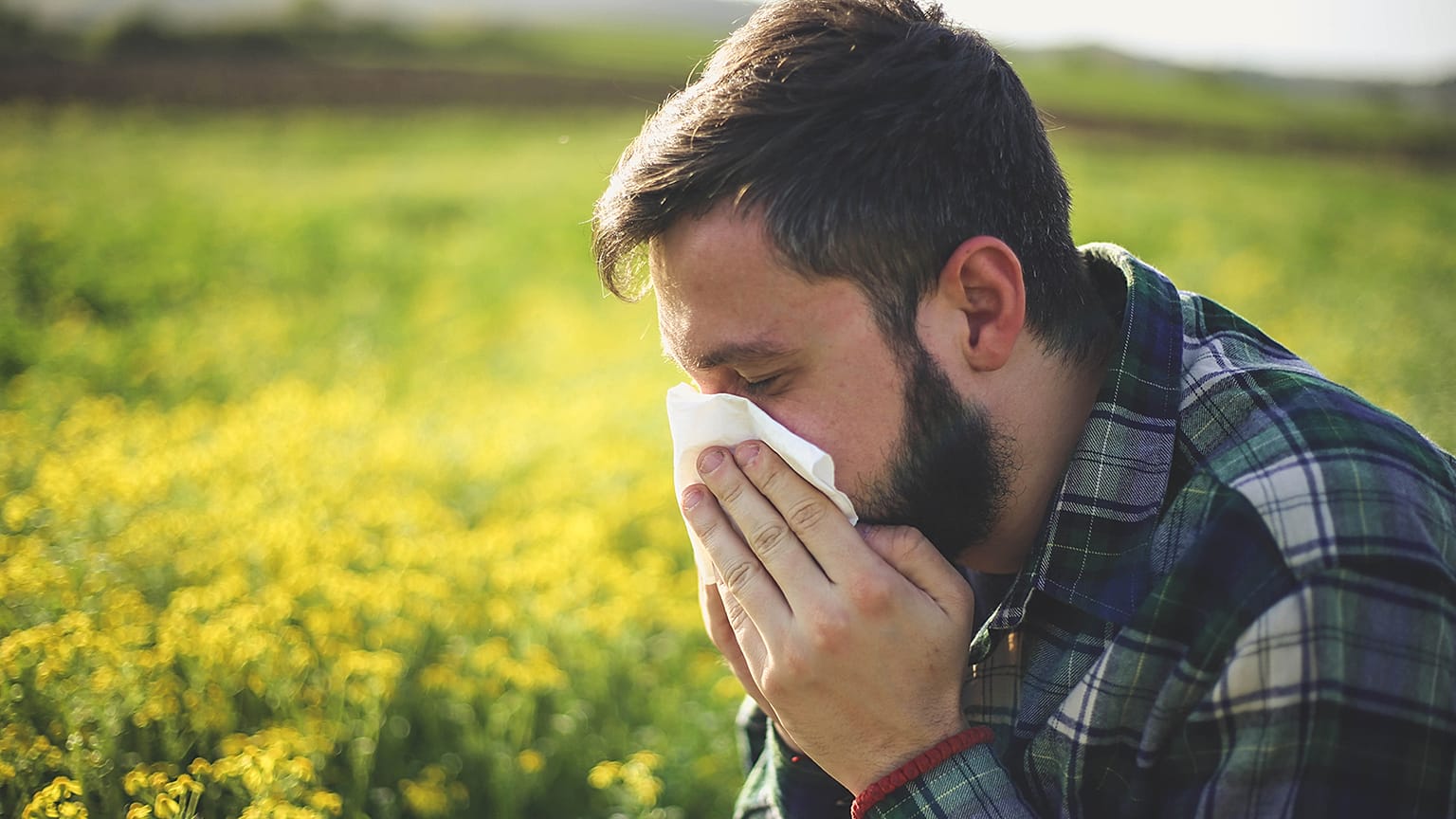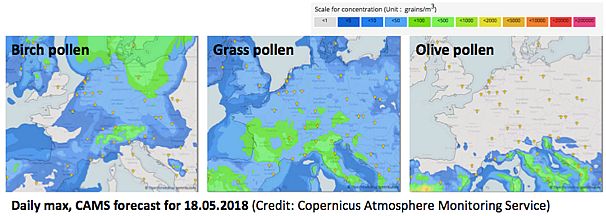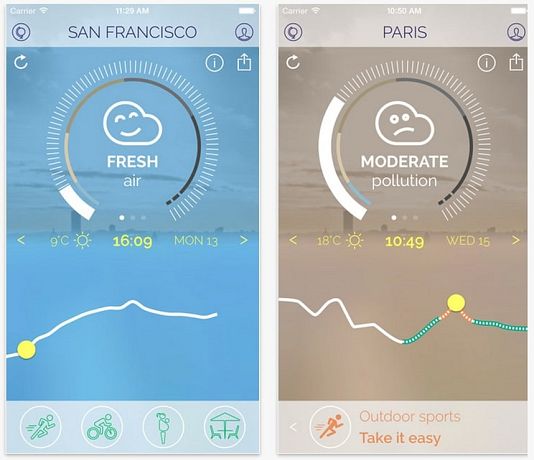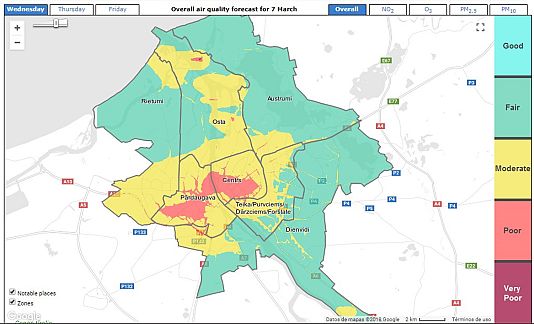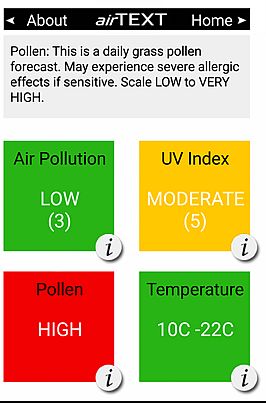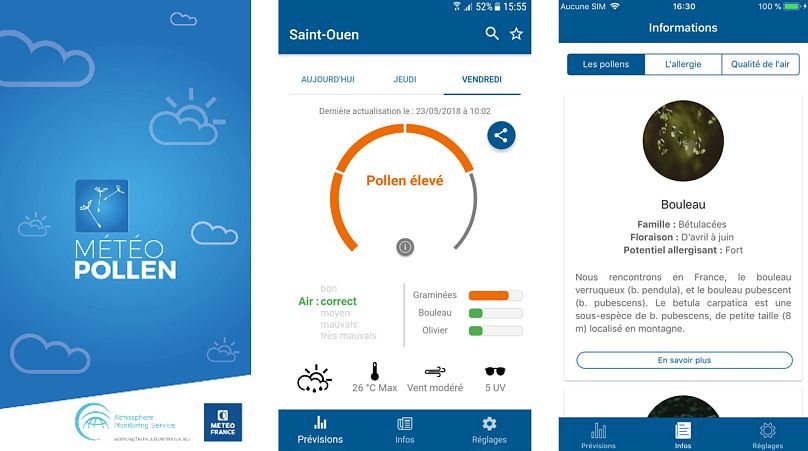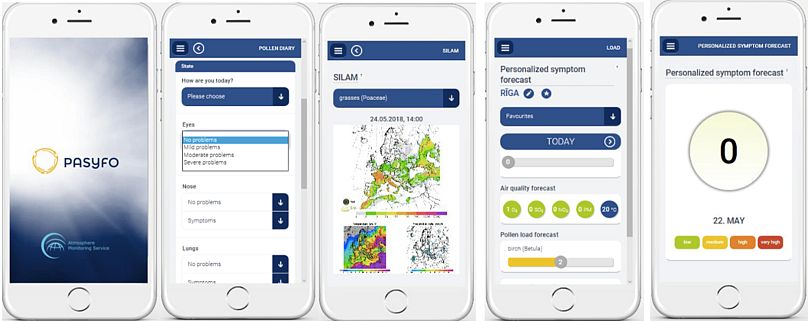With currently over 100 million people suffering from allergic rhinitis and 70 million from asthma in Europe, it is crucial, particularly during the peak pollen season of May and June, which is also prone to ozone and fine particle episodes, to warn respiratory disease sufferers in time to enable them to take measures such as preventive medication and evasive actions. Today, around one in four people in Europe is severely affected by hay fever symptoms, and this could increase greatly in the coming years as the combination of higher temperatures, high levels of carbon dioxide and other air pollutants will not only induce higher production of pollen, but will also interact with them, making some pollen more aggressive towards allergy sensitive people.
With a daily production of near-real-time European air quality analyses and forecasts, The Copernicus Atmosphere Monitoring Service (CAMS) is a key partner for the developers of a new generation of innovative apps designed to alert and inform users about air pollutants and pollen. By sending accurate, timely and personalized information to their mobile phones, these new dedicated apps will allow users to take the necessary preventive actions.
The Copernicus Atmosphere Monitoring Service (CAMS) currently provides four-day forecasts for the most common types of pollen in northern and southern Europe (birch, olive and grass pollen), thus allowing allergy sufferers to be warned in time to protect themselves by taking action and, if necessary, preventative medication. CAMS also plans to add ragweed pollen to its portfolio of forecasting products for the start of the season later this year (August to November) to warn European allergy sufferers of this invasive species.
Plume Labs Air Report - a successful app prompting users to adapt their behavior to pollution levels
Air report by Plume Labs (Copyright Plum Labs)
At the end of last year, the Plume Air Report app was downloaded close to a half million times, and the company developers continued to improve the services offered on mobile phones and online, adding new languages and functionality to make the reports accessible to as many people as possible. The Copernicus Atmosphere Monitoring Service (CAMS) helped to expand the coverage to every city in the world by providing global air quality pollutants monitoring.
Plume Labs enables individuals to lower their exposure to pollution through making small changes to their daily routine based on air quality forecasts and analyses of pollutants. Depending on the current air quality reading in your city, the Plume Air Report provides some dos and don’ts represented by the icons at the bottom of the main screen. The app lists 4 main activities: going for a run, riding your bike, heading outdoors if you have sensitivities, and dining outside. According to a survey, 73% of Air Report users said it has helped them make changes to avoid smog spikes in their city.
airTEXT UK & Latvia - a multi-channel service directly alerting the population of various air quality indicators
Riga airTEXT maps show forecasts of expected air quality over the next three days
First launched for the Greater London area, this free air quality forecasting service was extended to the South East of England and more recently to Riga, the capital city of Latvia. airTEXT is a free and independent public service that provides 3-day air quality alerts twice daily and forecasts by SMS text message, e-mail, voice message, or directly on your mobile device if you download the app. Through the collaboration between the Estonian, Latvian & Lithuanian Environmental companies (ELLE), the British company Cambridge Environmental Research Consultants (CERC), using their urban air quality dispersion modelling system and the data feed from the Copernicus Atmosphere Monitoring Service (CAMS), enabled the creation of air quality maps with street-level resolution. Those forecasts include air pollutants such as Nitrogen dioxide (NO2), Particulates or Particulate Matter (PM10), (PM2.5) and Ozone (O3). Alongside those air quality indicators, ultraviolet (UV) radiation is also forecasted by CAMS, as well as birch and grass pollen.
CERC's airTEXT online for London (Copyright CERC)
Météo Pollen - with this new app, allergic people in France can now anticipate pollen spikes around them
Météo Pollen (Copyright Météo Pollen)
Météo Pollen is a new app developed in April 2018 by Weather Force, a start-up in Toulouse, in partnership with the Copernicus Atmosphere Monitoring Service (CAMS). With this free app, French people’s mobile phones will give them access to pollen forecasts, city by city and over the next three days.
Thanks to the CAMS data feed, they will not only have access to the pollen concentration levels but also to the air quality index which can impact people sensitive to allergies. This very easy-to-use application provides forecasts for birch, grass and olive pollen, and dedicated tabs give access to complementary information about pollen and specific advice developed in collaboration with an allergist from the French pollen survey network RNSA. With more than 10,000 downloads just one month after its launch, this new app proves its usefulness for allergy sufferers and is complementary to the actual observations of pollen that are disseminated by the RNSA.
DiscovAir – an app aiming to keep residents and visitors in Greece and Cyprus healthy
DiscovAir is powered by the Copernicus Atmosphere Monitoring Service (CAMS) data including, besides weather aspects (e.g. temperature and humidity), environmental parameters such as pollutants, UV radiation and pollen, which can have a strong impact on the comfort and health of citizens. These parameters can also influence the choices of the tourists when travelling. In combination with personal health information, DiscovAir recommends an optimal time to visit any given location, based on its air quality, UV index, pollen, and temperature. The App is currently being evaluated by beta-testers and will soon be released to the public.
PASYFO: from pollen monitoring to allergy symptoms forecasts
Informing and forecasting the concentrations of main allergenic pollens in the air is essential, but it is only the first step because different people respond differently to different varieties of pollen. To make a real difference, companies and organisations are striving to provide personalised forecasts to individuals.
The medical university in Vienna ran a test in which volunteers provided their day-to-day symptoms over several years. These were correlated with the day-to-day amount and type of pollen in the air. If the symptoms are provided for two years, it becomes possible to predict an individual’s symptoms using a pollen forecast in the third year, as demonstrated by the scientific team of Aristotle University of Thessaloniki.
To move this technology towards practical applications, the PASYFO (Personalised Pollen Allergy Symptom Forecasting System) and application was developed in collaboration between the University of Šiaulai (Lithuania), the University of Latvia and the Finnish Meteorological Institute. Users are asked to input their eyes, nose and/or lungs allergy symptoms on a daily basis through the app’s simple interface. Information is processed securely and correlated with the CAMS forecasts of pollen and of concentrations of key atmospheric pollutants. This progressively refines the profile for each user so that the individual can eventually be provided with highly reliable and tailored symptom forecasts.
Visualisation of the system in PASYFO App
PASYFO is already very successful with hundreds of patients already registered in Lithuania and Latvia. It was distinguished in particular at the recent Congress of the European Academy of Allergy and Clinical Immunology (EAACI), which took place from May 26th to 30th in Munich, Germany. EAACI is Europe’s largest medical association in the field of allergy and clinical immunology, and its annual Congress offers a unique opportunity to learn about the latest discoveries. With healthcare professionals and key opinion leaders joining from around the world, this meeting offers an excellent platform for knowledge exchange, learning and networking. It was said that PASYFO effectively paves the way to the future of "personalised medicine".
For more related information, go to CAMS website:
https://atmosphere.copernicus.eu/news-and-media/news/cams-helping-allergy-sufferers
https://atmosphere.copernicus.eu/news-and-media/news/pasyfo-distinguished-eaaci-congress-2018

